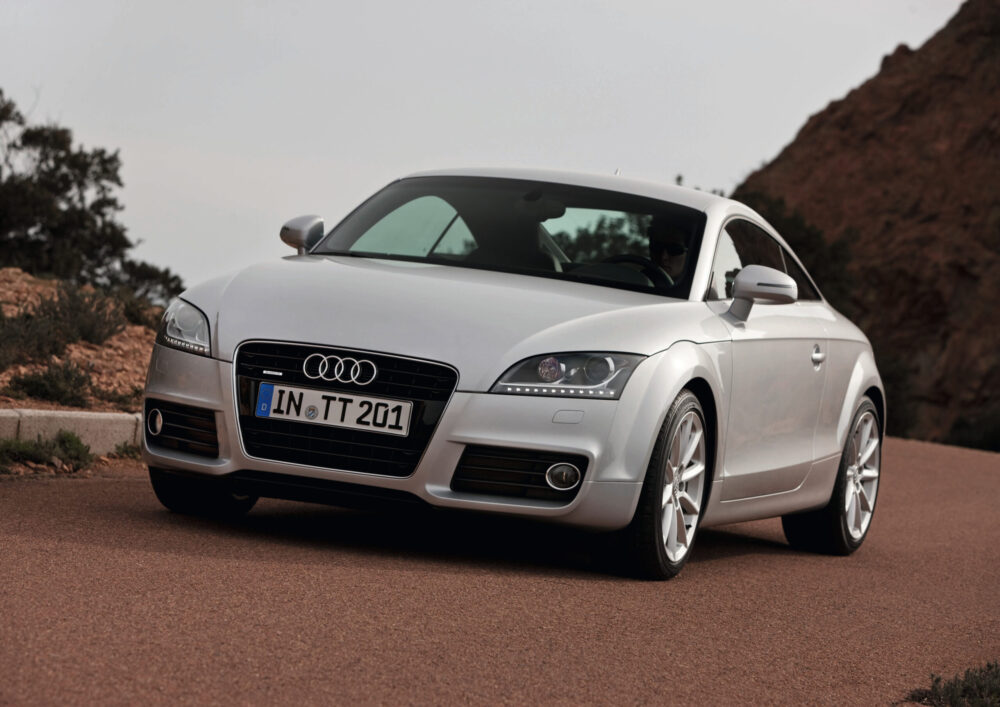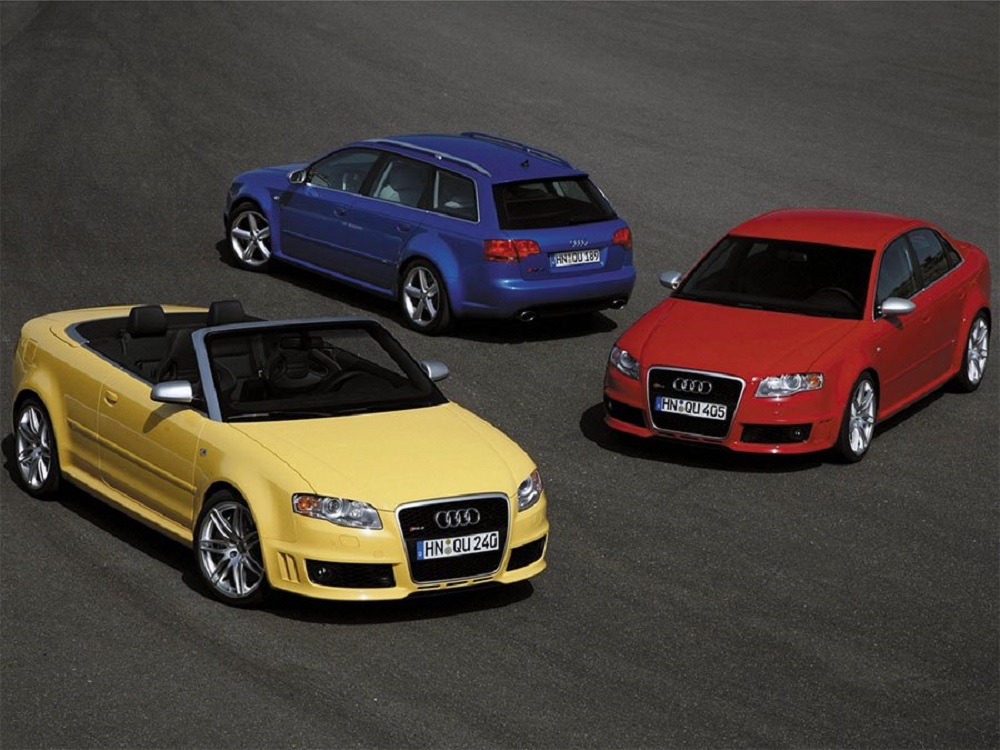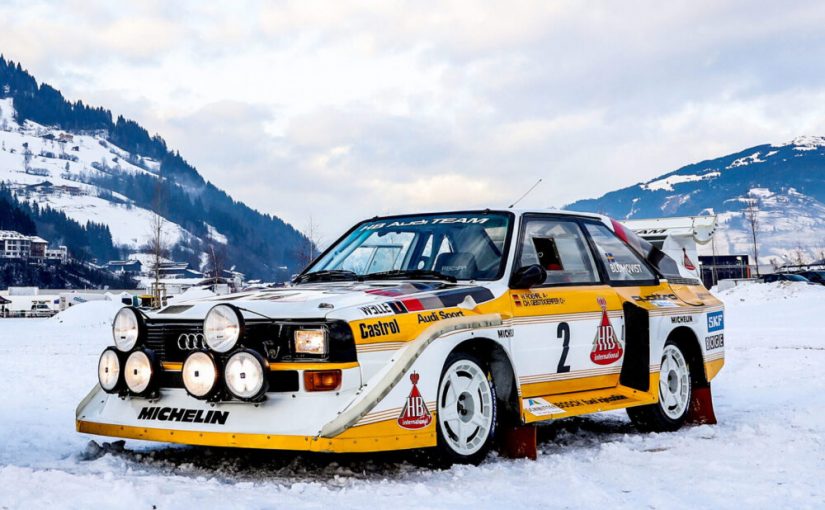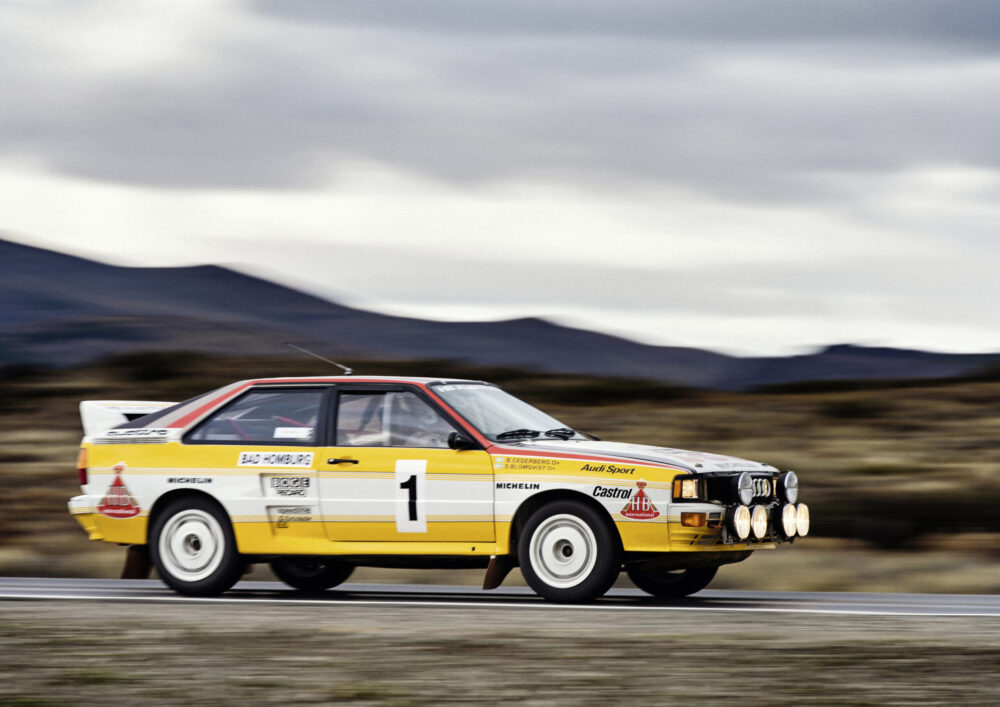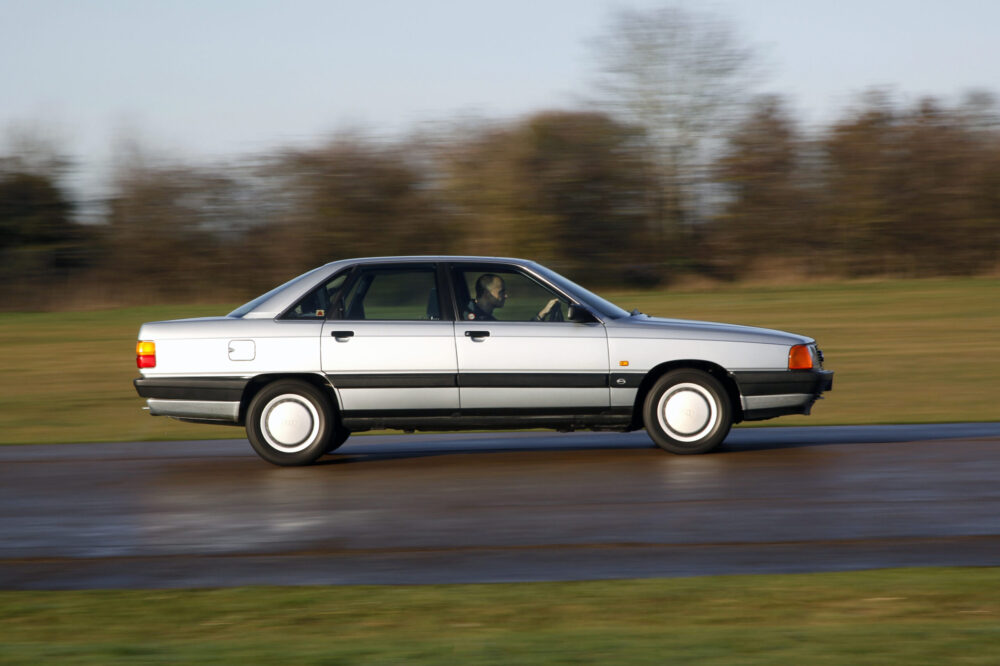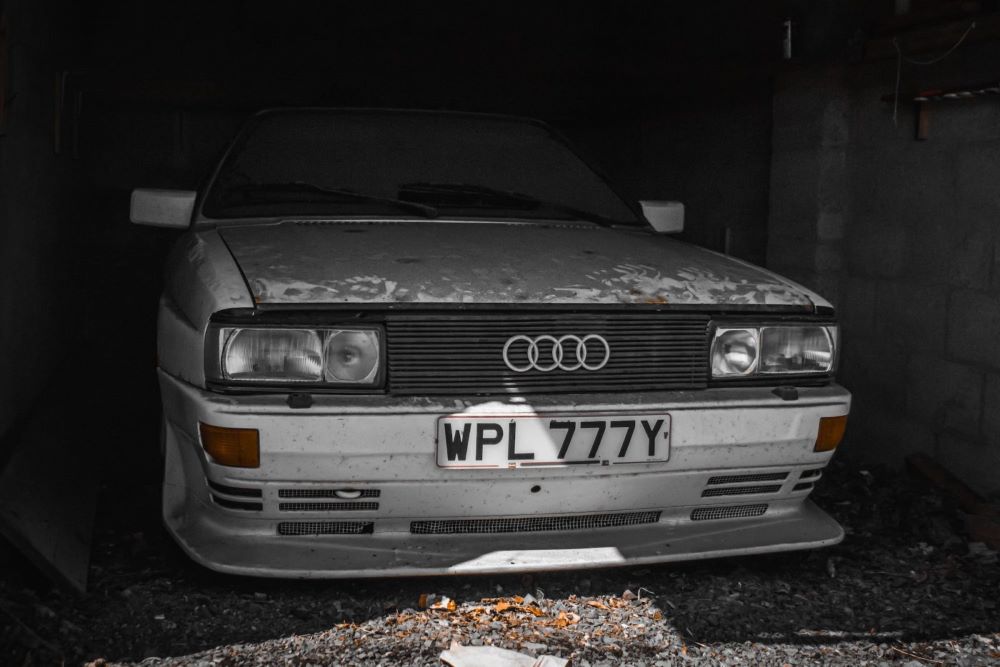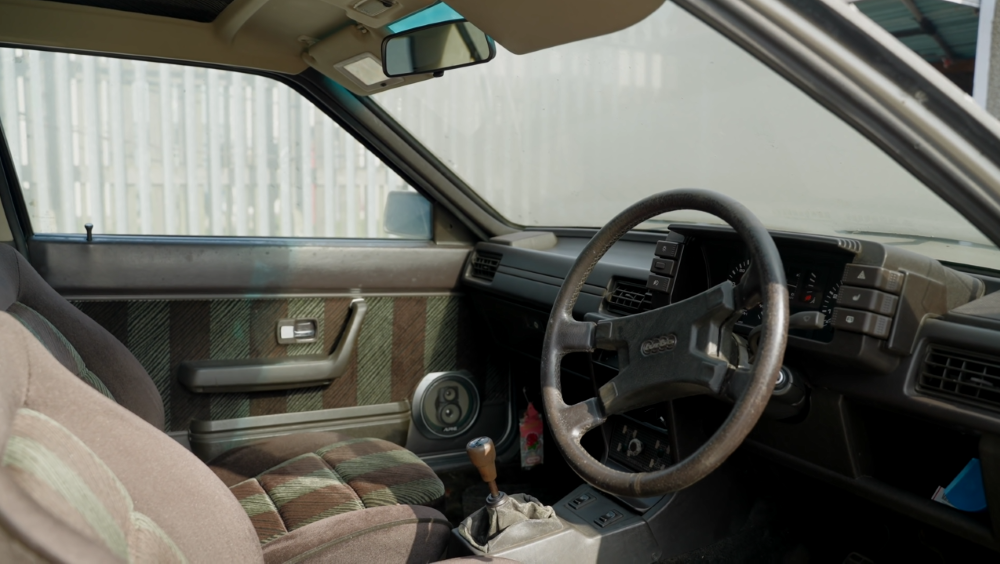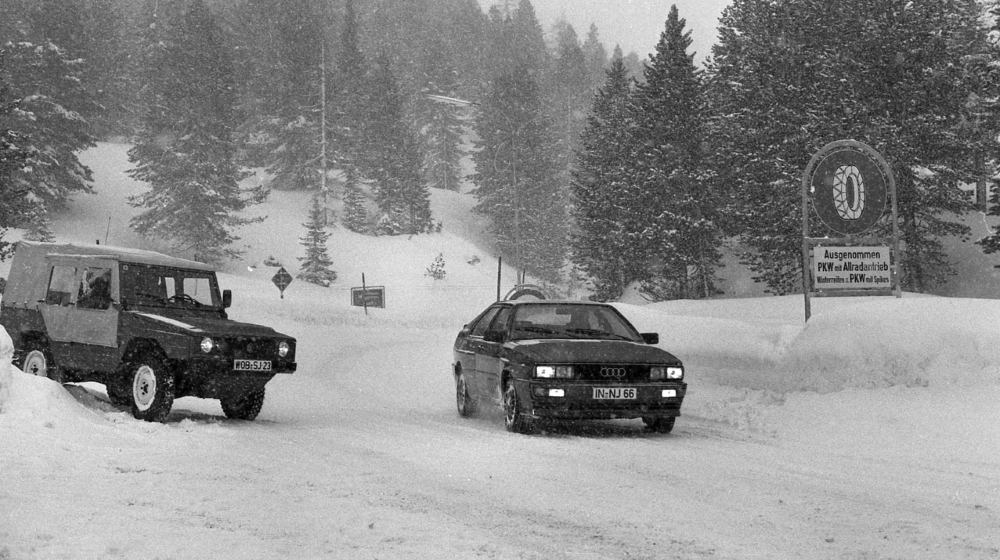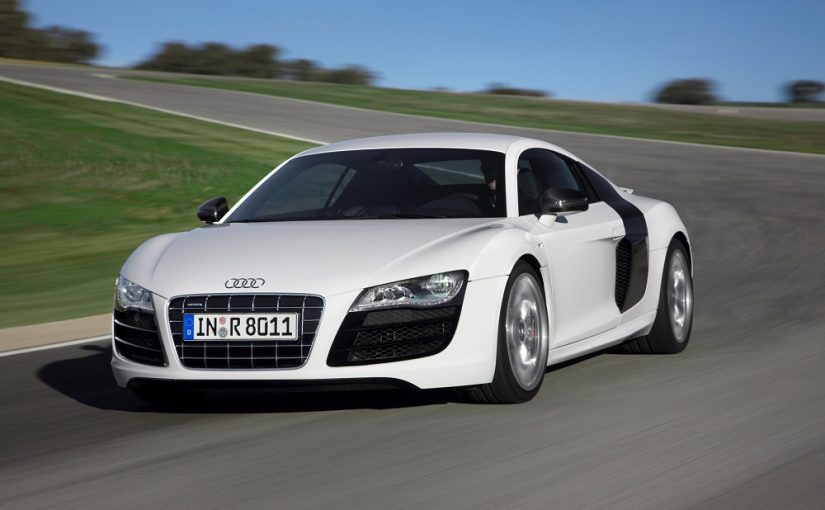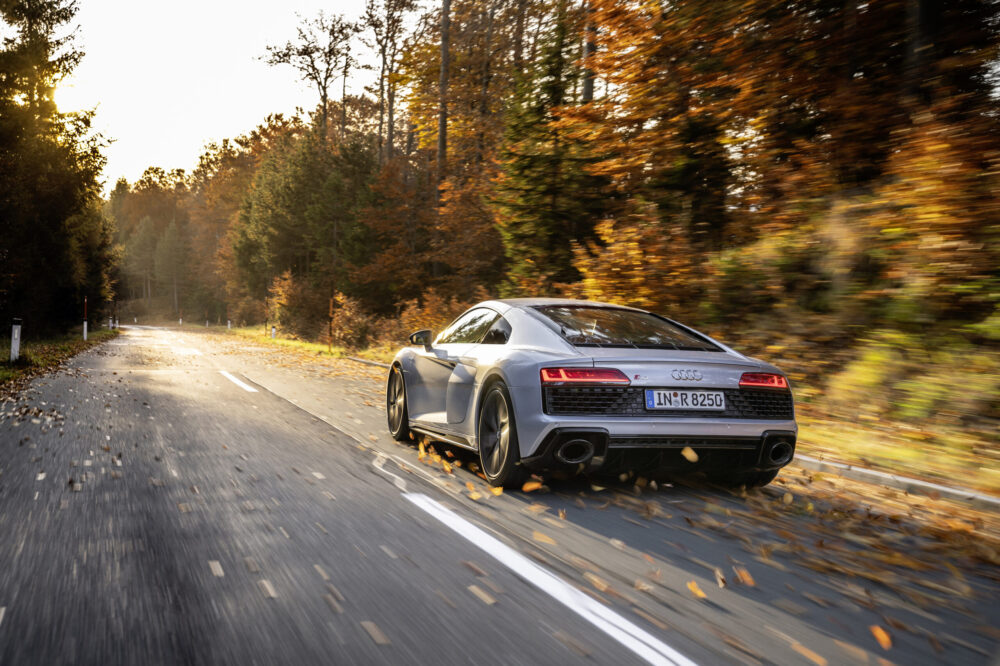
A glimpse into the history of the Audi R8 flagship supercar. This article explores its origins and influences leading up to its production.
A common ritualistic practice of every budding enthusiast in their early years is the purchase of a car poster. You know the ones. You go to the school book fair and sort through the big cardboard bins, hoping to catch a glimpse of a poster with a tantalizing photo of your dream car. And you say to yourself as you proudly display it center-stage on your bedroom wall, “One day, I’m gonna own that car.” Well, by the late ‘90s, not a lot of Audis were in those collections anymore. In fact, Audi’s production models, while unquestionably rapid, were also missing something important.
The early 2000s included peppy, sporty models like the TT as well as luxury super saloons like the S4 Quattro. But the centerpiece was missing, the flagship poster car. A car which combined the fun-factor of the go-kart handling TT with the animalistic power of the S4. Naturally, Audi was perfectly happy to oblige.
Repeating History
Firstly, a bit of backstory. As previously discussed here, Audi has a motorsport lineage dating back over a hundred years. After the retirement of the factory-backed Quattro from rally, Audi vehicles would once again prove themselves on tarmac. This kicked off in 1989 with the debut of the Audi 90 in IMSA’s GTO category. Their Quattro-equipped vehicle dominated its rear-wheel-drive counterparts with ease. By the following year, they’d return to Germany, successfully competing in Group A with the V8. Using knowledge gained from the successes of such vehicles, Audi would in-turn adapt their motorsport knowledge to their road cars. The debut of the S2 in 1991 marked the beginning of the respected S and RS lineups.
Small Car, Huge Potential
Audi was rekindling the magic again. But it requires even more radical thinking than that to really put themselves back on the map. In the same year, they released not one, but two striking concept cars: the Quattro Spyder and the Avus. The Avus, an homage to the Auto Unions of old, was a one-off prototype with a wooden-mockup 6.0L W12 engine. Named after the famous Avus-Rennen, its lines were unquestionably evocative of the early racers. While built as a mid-engine vehicle similar to the R8 we know today, it wasn’t nearly as influential in its predecessor, the Quattro Spyder concept.
The Quattro Spyder debuted at the Frankfurt Motor Show, and it immediately struck a chord with its distinctive body style. The most distinctive feature was its mid-engine configuration, the first mid-engined Audi since the days of the Auto Union racers. With a 2.8L V6 and the ubiquitous Quattro drive system, the car would’ve been light, nimble, and very grippy. However, such a vehicle proved too expensive for Audi to commit, and it sadly never saw the light of day. Or, more accurately, it was put back in the oven to cook a little longer until it was just right.
Building a Racing Legend
During this interval, Audi was by no means sitting idly by. They remained highly active in motorsport throughout the 1990s. This culminated in the debut of the R8 (no, the other R8) in the 1999 24 Hours of Le Mans. It would be their first foray into the famed event as a factory-backed team. This edition of the R8 would come in two flavors: open-top (LMP-class R8R) and closed-top (LMGTP-class R8C). They weren’t as fast as the BMW’s, but they were extremely durable and raced hard to a 3rd and 4th in the LMP-class that year. Ultimately, however, they would be the harbinger for the far more potent R8 to come.
Now simply the R8, this vehicle made its debut in 2000, and quickly made a habit of winning most of the races it entered. Since its debut at the 2000 12 Hours of Sebring until its retirement in 2006, the vehicle entered 79 races – and won 63 of them. That’s an incredible ratio, and would easily immortalize the vehicle into the history books. Its racing history is long and storied, so it won’t be elaborated upon more here.
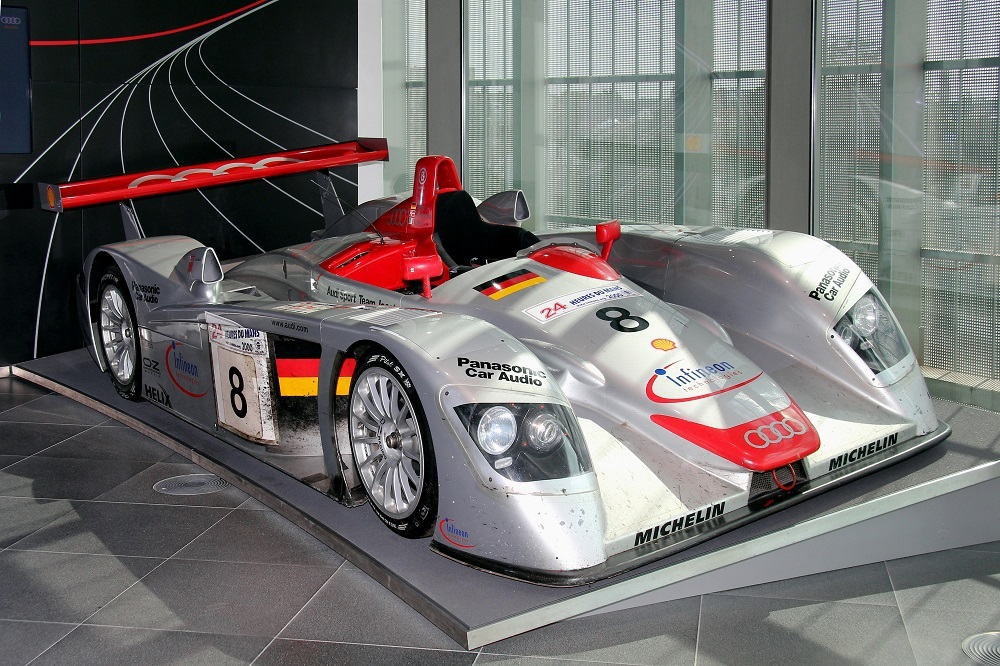
…And Adapting that Legend for the Road
Audi, however, saw more potential with the R8 than just winning races. The car had almost single-handedly reinvigorated the brand’s worldwide image, with Le Mans the center-stage of the world’s finest racing vehicles. The public wanted some of what Audi was putting out. Enter a man named Frank Lamberty, who was only too happy to oblige. Frank designed a vehicle that effectively incorporated the nimble mid-engine layout of the Quattro Spyder with the savage power of the early 2000s RS models into one package. Initially referred to as the Le Mans Quattro, this new vehicle stunned the audience of the 2003 Frankfurt Auto Show. Initially, the vehicle was intended as an homage to Audi’s third successive win by the R8 at Le Mans. However, its reception was undeniable. Audi had finally found its poster car.

The R8 Green Light
The decision to put the Le Mans into production occurred almost immediately afterwards. In 2005, the vehicle’s designation was officially changed to the R8 in homage to the LMP car. Lamberty’s design team worked with renewed vigor – as the R8 race car continued its rampage on the track, this car would do the same on the road. Originally the vehicle was announced for the 2007 model year, but the expected retirement of the R8 LMP in 2006 would accelerate their plans. Not that it had much effect, since all the hard work was completed already. The revised production vehicle would subsequently be revealed to the world at the Paris Motor Show in January 2006, and orders immediately flooded in.
The major design alterations between the Le Mans and the first-production R8s were in the powertrain. While the Le Mans was equipped with a 5.0L twin-turbocharged V10, the production model scaled it back to a more modest (but undeniably savage-sounding) 4.2L V8. The initial models were equipped with a six-speed gated manual or automated manual gearbox, both produced by Graziano. They were designated in-house as Type 42’s, owing to the engine displacement. These vehicles saw performance comparable to the likes of mid-range Lamborghinis, Vipers, and Ferraris, with their vicious acceleration and tight turning radius by design.
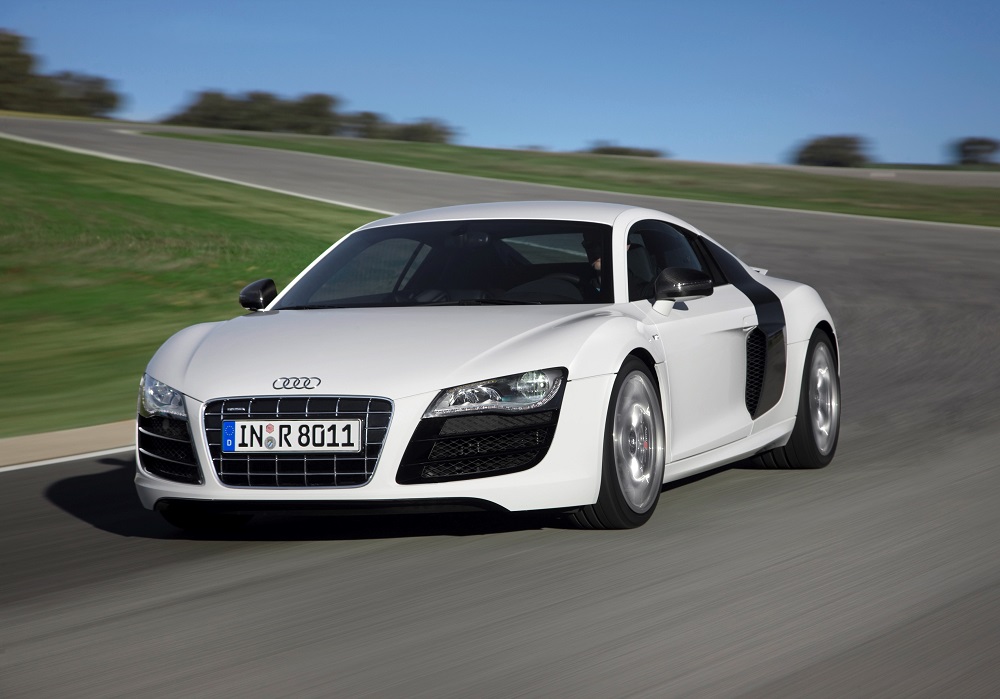
The Poster Car Returns
The car was immediately successful both domestically and abroad, making its appearance in popular media and video games alongside the likes of the aforementioned vehicles. Capitalizing on this popularity, Audi quickly followed up with a new engine in December 2008, the 5.2L V10, restoring the lost two cylinders from the Le Mans. Both models were produced side-by-side, although the V10 model would see other changes alongside the engine. For example, one notable alteration was the headlights, as this would be the first production car with all-LED headlights.
Of course, Audi wouldn’t be content with just building a poster-car for the road car fans. So in 2009, they debuted the R8 LMS for GT3 race regulations. Sporting a RWD layout to comply with restrictions, the LMS retained the V10, now pushing close to 570 horsepower without a restrictor plate, mated to a brand-new six-speed sequential gearbox. The first deliveries were made for the 2010 season, and the vehicle continues to be a highly competitive racer to this day in various classes of motorsport.
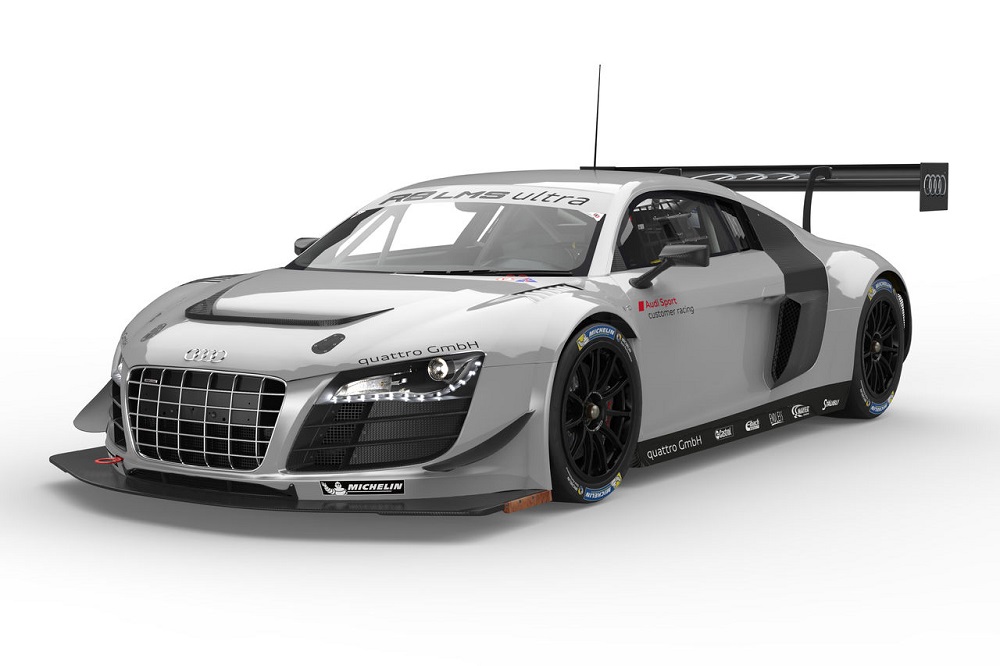
Keeping the Ball Rolling
The R8 would continue being revised right up until the discontinuation of the original line in 2015. A spyder model was introduced in late 2009 for the 2010 model year, although the public was teased with its existence in the 2008 filming of the movie Iron Man 2. Of course, the most significant change was the 2012 facelift. This incorporated numerous changes such as a new bumper and grille, 7-speed DCT gearbox, standard adaptive damping, revised interior, and more. The gated six-speed and traditional headlights were subsequently dropped, and the new line introduced the R8 V10 Plus. Essentially a more racing-oriented R8, this model would see many minor cosmetic and functional variances to give it a meaner look and stiffer, more nimble feel.
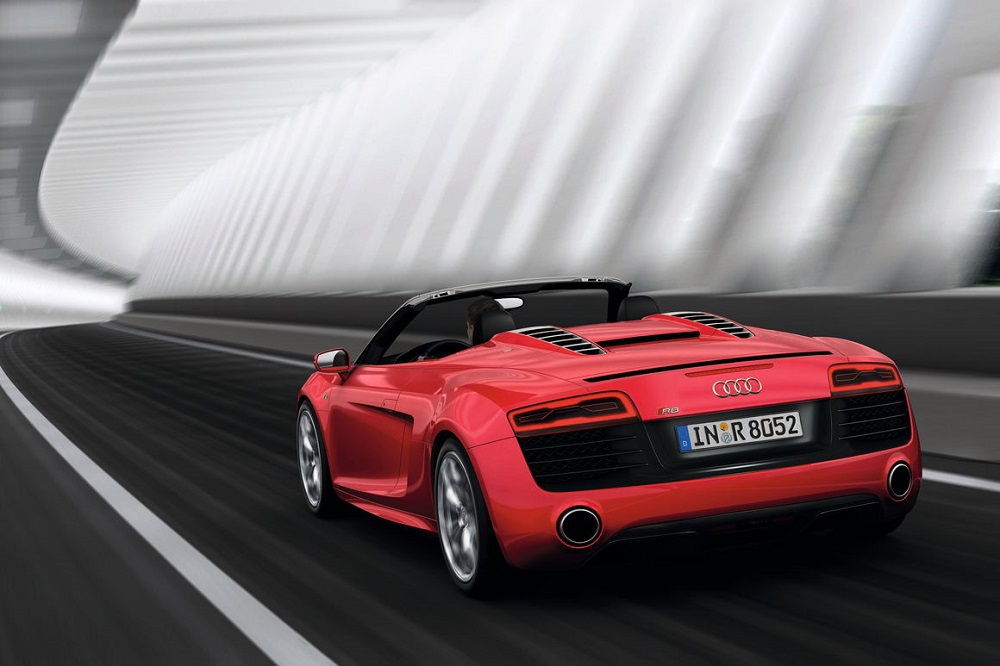
While the first car used essentially the same frame as the Lamborghini Gallardo, by 2015 that platform was coming to an end. Knowing this, Audi designed a completely new platform from the ground up for the R8 in late 2013. The new platform, called the Audi Space Frame, was an all-aluminum monocoque chassis and is internally referred to as the 4S. This second-generation model was unveiled at Geneva in 2015 and shared the underbody of the new Lamborghini Huracan. The car’s design was further accented with a more angular, aggressive general shape. Hard lines were used frequently, especially with the grille, lights, and side trim. The 5.2L V10 and 7-speed transmission were retained and power increased to just over 600 horsepower. A minor facelift in 2018 was all that was needed to keep the vehicle looking and sounding wonderful, and it remains in this configuration to this day.
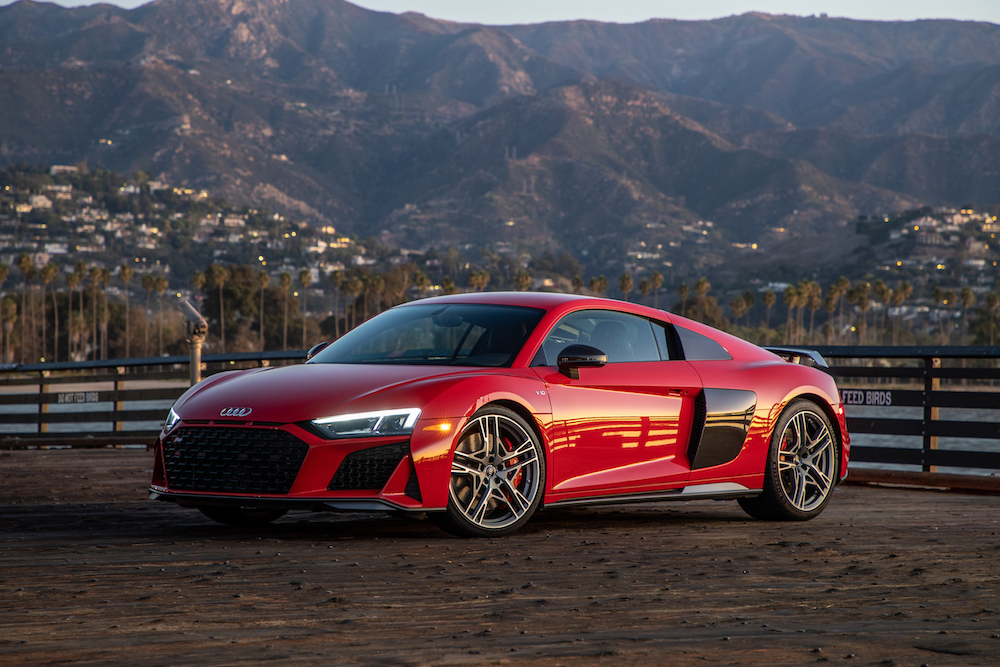
The Legacy of the R8
The design has proved itself time and again in popular media as well as on the road and track. Today, the R8 continues to enjoy this success with more than 40,000 units sold worldwide. The model’s even proven itself as a testbed for future Audi innovations. It’s been outfitted with a TDI V12, rear-wheel steer, two electric motors, and even the 2012 China Edition specially made for the Chinese market. But, far more crucially, the R8 put Audi back on the map as a car people aspire to own. Audi’s proven it can both talk the talk and walk the walk. And the company’s flagship finally returned to children’s walls for the first time since the S1 Quattro, and rightfully so.
Images from Wikimedia Commons and Audi MediaCenter
Click HERE to join the AudiWorld forums!

Matt’s been an automotive aficionado since he was a toddler learning how to stand by leaning on his grandfather’s classic Porsche. Since then, he’s been thoroughly and utterly captivated by all things motoring. He’s also a novelist and short story author, and enjoys writing across many genres. His primary goal is to share some of his love of automotive and motorsport history through the medium of writing, as well as talk about this passion we all share in a thought-provoking way. He’s a true a sponge about vehicles, and enjoys learning about just about any aspect of motoring, especially historically significant and/or oddball stuff.
